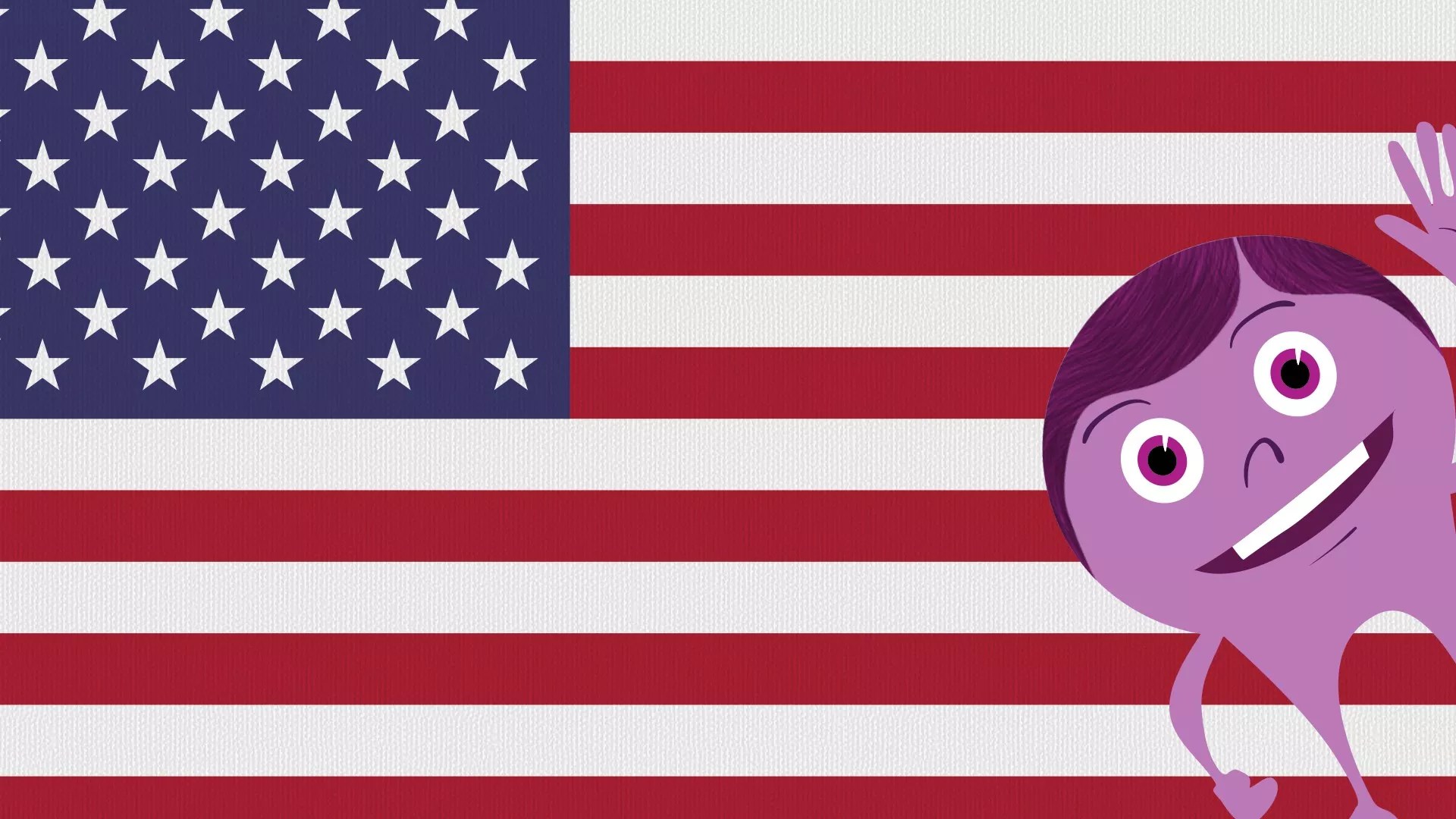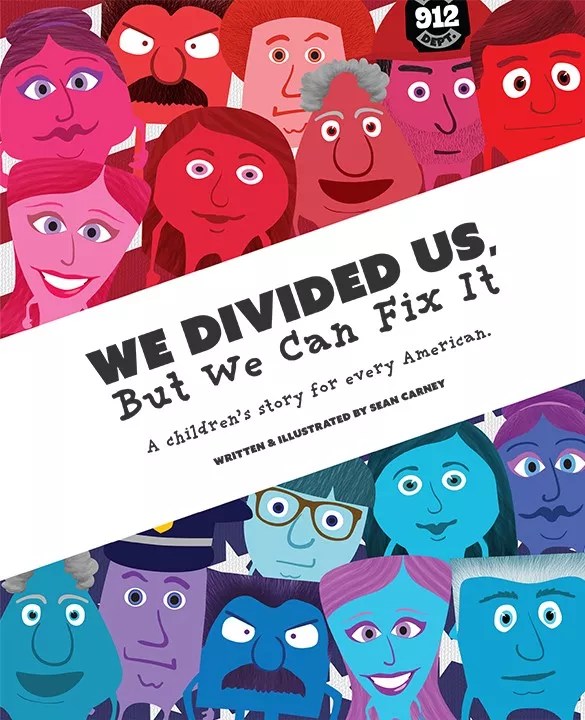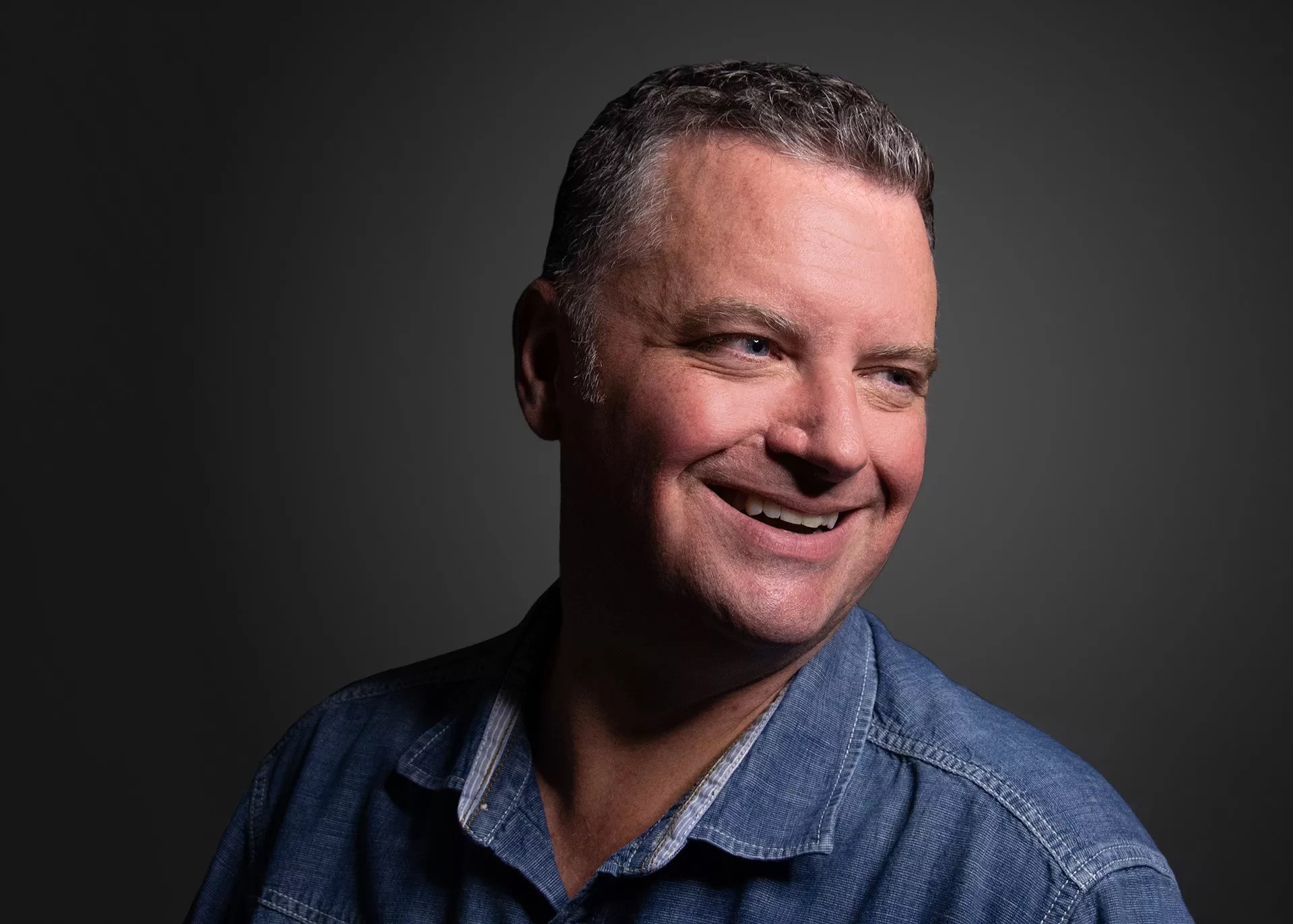
Sean Carney

Audio By Carbonatix
Sean Carney didn’t set out to be an author. But inspired by an available website domain name and his own eight-year-old daughter’s reaction to the 2016 election, he’s tackling one of the great challenges in the United States by writing a children’s book, titled We Divided Us, But We Can Fix It.
The book, now building support on Kickstarter with an October 17 deadline, focuses on the young Teddy Turple, who finds himself concerned with America’s political climate. It’s a story that Carney hopes will speak to kids and adults alike.
We caught up with Carney to find out more about the project, its inception, its crowdfunding campaign, and how we can fix the political division in America.
Westword: You say on your website that you started the “We Divided Us” project because of your daughter and her friends’ reactions to the current state of politics in America. How did you first notice it, and what was it that made you decide it was something you needed to do something about?
Sean Carney: Growing up, we didn’t talk about politics in my family. When I was nine, I remember asking my dad who he voted for in the presidential election. He told me it was private and none of my business. We never really talked about politics again for a long time.
Fast-forward several years, and my wife, Lori, and I are doing our best to raise two strong, independent young ladies. Lily is eleven and Piper is seven. Piper’s still too young to care about it, but with our 24/7 barrage of partisan talking points, Lily is all too aware of American politics. The morning after the 2016 election, she came bounding down the stairs. Being eight, she had gone to bed before the results were final. “Who won?” she asked. “He did,” I said. She cried. Real, authentic tears, before school. She had chosen her own candidate. Not because my wife or I told her to, but because she had watched the election unfold with us and made up her own mind. On inauguration day in 2017, Lily brought home a pamphlet with facts about the day. Her third-grade class watched the ceremony and she said that a bunch of kids booed. That was when I realized just how broken things had gotten.
I don’t remember what dumb thing I was into when I was eight, other than Garbage Pail Kids, but I surely didn’t care much about politics or the outcome of an election. Kids today are more connected, more aware of what’s going on in the world. Which sounds nice in theory, but then you consider the memes and misinformation getting passed around and realize that’s all these kids have experienced. They don’t know any different.

Sean Carney
So how did the concept become a book?
As with many good ideas these days, We Divided Us, But We Can Fix It started with a domain name. I found that WeDivided.Us was available and bought it on a whim, but wasn’t sure what to do with it. I briefly considered starting a political blog and forum, but quickly realized that’s not my jam. I was talking to one of my best buddies about the name and idea, and he said, “Dude, that should be a children’s book.” Since then, I’ve been going a hundred miles an hour. I wrote the story, illustrated the characters, designed the website, planned the Kickstarter campaign, edited the videos. It’s been a bit of a blur.
Speaking of the Kickstarter campaign, yours has very nearly met its goals, and your deadline isn’t until October 17. What’s been your experience with Kickstarter, and how have you been getting the word out?
This experience has been really exciting; the past several weeks have been a whirlwind. Kickstarter itself has been pretty straightforward to operate, and I’ve been pretty happy with the process. Starting months ago, I did my homework and learned everything I could about how the platform works. This is a grassroots effort, with a microscopic blip of a marketing budget. In order to get natural, unpaid traffic from people browsing the site or receiving their emails, you need to bubble to the top of the suggestions. And for that to happen, without getting too nerdy, it all comes down to algorithms. I’m not really a math guy, but in the simplest of terms, it’s “people plus money divided by time.” You want action in the first couple of days, so I flooded my friends with the news as soon as I launched. I’d been really quiet about the project, so when the news got out, it spread through my network pretty quickly. I’m fortunate to have very supportive friends and family.
I’m also trying to get the word out by offering some unique rewards, like including a brief message in the “United We Stand” pages at the end of the book. Then there’s the Super Duper Ink Club, where I’ll draw a custom character for you that gets printed in the book. One of my loftier goals of the campaign is to have a copy of this children’s book gifted to every politician on the national stage. All 535 members of Congress, our Supreme Court Justices, and, of course, our vice president and president.
Why go directly to Kickstarter instead of pitching it to major publishers first?
Probably the biggest reasons are that I’m impatient and famously difficult to work with. Just kidding about that last part. I love to make stuff. It’s true that I’m impatient, but I also have a DIY attitude about most things. I didn’t want to be beholden to anyone, I didn’t want to wait for anyone, and I’m always eager to learn something new. I’m proud to be a jack-of-all-trades, and each experience adds another tool to my toolbox.
So what’s your art background? What do you do for work besides children’s lit?
I’ve been a creative person my whole life, but it kicked into high gear when I was about thirteen. My uncles had an old black-and-white photo darkroom in my grandparents’ basement, so I dusted off the equipment and went to work. I can’t count how many hours I spent down there, processing my T-Max 400 film and making enlargements. I actually miss the smell of the chemicals. Kids these days don’t know what they’re missing.
Photography led to some student-publication work in high school and college, which was the foundation of my design skills. Basic layout, light graphic design, literal copy-and-paste of printouts using X-Acto blades and wax. Nothing sexy or too exciting. But grinding out those ads for the college bookstore and local liquor stores taught me the fundamentals of the craft.
After college, I started working as a writer for a small startup here in Denver, but they moved everyone to Seattle with dollar signs in their eyes. That was February of 2000, just before the tech bubble burst and the company went belly-up. I lived in Seattle for sixteen years, working as a copywriter and creative leader for big companies you’ve definitely heard of. I moved back to Colorado in 2016 for a job, but got laid off right before Christmas last year. Sad trombone. Since then, I’ve taken a step back, done some freelance work, enjoyed time with my family and focused on this book.

Sean Carney
Any thought to writing full-time?
Once upon a time, I imagined that a career in the creative industry would be exciting and glamorous, with cool offices just like they have on TV. After eighteen years of bland corporate life, with beige cubicle walls and brown carpet, this is my chance to release a project into the world that’s truly my own. And the fact that I get to do my work at home, where I can be involved in my kids’ lives and create my own cool office space? That’s even better than the TV version.
I have a fountain of ideas of what’s next for Teddy Turple, so I think we’ll see more of him. I have an idea for a board game rattling around in the back of my head, and I have a fun idea for a movie script. I’m not sure what’s next.
What’s been your response from supporters so far?
The response has been 100 percent positive. The loud, self-doubting voice in my head keeps waiting for unjust criticism, but that hasn’t happened yet. Before I worked on the art for the book, I had Lily read the story out loud to some family, and my mom cried. After that, I started sharing the book with as diverse a group as I could find, looking for someone to find problems with it. I even sent it to my kids’ elementary and middle school principals, thinking I’d be in for some red ink or a bad grade. Not to sound disappointed, but so far everyone has loved it, complimenting both the message and the art.
What’s the risk, do you think, in taking on a project like this? How do you keep from offending everyone, “Redublicans” and “Bluemocrats” alike?
This day and age, it seems to be really hard to say or do anything without the risk of offending someone, somewhere. But the underlying message of the book is one of respect and understanding, and I’ve been really, really careful to keep the message about working together as non-partisan Americans. One of my favorite lines from the book is when Teddy says, “This isn’t a sport. This isn’t a game. This land is our land, and our future’s the same.”
For me, this book is about the American dream: life, liberty, and the pursuit of happiness. It’s my dream to be an independent creative person, and the subject matter itself is about the dream of all Americans getting along or at least tolerating one another’s opinions. Live and let live.
How does living in a purple state like Colorado play into your idea and invention process for this book?
I was born in Greeley, raised in Fargo, North Dakota, went to college in Kentucky, moved back to Colorado, then to Seattle, and finally back to Colorado. For all of their cultural and geographical differences, each location had one thing in common: You can find “big-city liberals” and proud “rednecks” everywhere.
I’m really proud that Colorado is purple. And, yes, that did influence my storytelling. I’ve met hard-core conservatives who think liberals are all anti-American (not their exact words), and I’ve met hard-core liberals who think that every conservative is anti-American (not their exact words). To me, that’s people choosing party over country, vilifying people who have a right to their own opinion. What I’ve realized is that there’s rarely a purely red or blue answer in politics. It’s all different shades of purple.